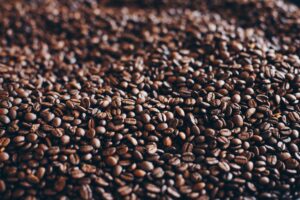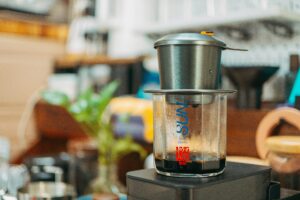If you’ve ever watched a barista carefully pour hot water over freshly ground coffee and noticed the grounds swell, bubble, and release gas, you’ve witnessed coffee blooming. While it may look like a small detail in the brewing process, coffee blooming has a big impact on the taste of your cup. Understanding why it happens—and how to do it correctly—can elevate your home brewing skills and help you enjoy a cleaner, more flavorful coffee experience.
Table of Contents
What Is Coffee Blooming?
Coffee blooming is the process of pouring a small amount of hot water over coffee grounds before brewing, allowing them to release carbon dioxide (CO₂) that was trapped during roasting. When hot water hits fresh coffee, the grounds expand and bubble as gases escape, creating what’s known as the “bloom.”
This step is especially common in pour-over, French press, and drip coffee brewing, but it can benefit almost any manual brewing method.
Why Does Coffee Bloom?
When coffee beans are roasted, chemical reactions cause them to release carbon dioxide. After roasting, beans continue to slowly “degas,” but much of the CO₂ remains trapped inside the bean’s porous structure.
Freshly ground coffee has more trapped CO₂ than pre-ground or stale coffee. When hot water first comes into contact with those grounds, the heat accelerates gas release, causing bubbling and blooming.
Why Coffee Blooming Matters
Blooming isn’t just about aesthetics—it directly affects flavor and extraction. Here’s why it’s important:
- Prevents uneven extraction – If you don’t bloom, trapped CO₂ can push water away from the grounds, causing uneven brewing and a sour taste.
- Enhances flavor clarity – Blooming allows gases to escape early, so the water can fully saturate the grounds, extracting more balanced flavors.
- Reveals freshness – A strong bloom is a sign of fresh coffee beans. Stale beans produce little or no bloom.
- Improves aroma – Blooming helps release volatile compounds, giving your coffee a more aromatic profile.
How to Bloom Coffee Correctly
Blooming is simple but makes a noticeable difference. Here’s a step-by-step guide:
- Measure your coffee – Use freshly ground beans. Aim for a medium grind for pour-over.
- Heat your water – The ideal temperature is around 195–205°F (90–96°C).
- Start with a small pour – Pour about 2–3 times the weight of your coffee in water (for example, 40g water for 20g coffee).
- Let it sit – Allow the coffee to bubble and expand for 30–45 seconds.
- Continue brewing – After blooming, pour the remaining water in a steady stream for even extraction.
How Long Should You Bloom Coffee?
The ideal bloom time is usually 30 to 45 seconds, but it can vary depending on roast level:
- Light roast: May need a slightly longer bloom (up to 45 seconds) since it retains more CO₂.
- Dark roast: Often needs less blooming (20–30 seconds) because it degasses faster.
Blooming in Different Brewing Methods
- Pour-over (V60, Chemex, Kalita Wave): Blooming is essential for an even bed of grounds and balanced extraction.
- French press: Bloom for 30 seconds before adding the rest of the water, then steep as usual.
- Drip machines: Some high-end drip brewers have a pre-infusion (bloom) function. If not, you can simulate blooming by pausing after the first pour.
- Cold brew: Blooming isn’t necessary, since cold brewing extracts slowly and doesn’t trap CO₂ in the same way.
Common Blooming Mistakes
- Using stale coffee – Old beans won’t bloom much, making the step less effective.
- Too little water – You need enough to wet all the grounds evenly, not just a few spots.
- Skipping the wait time – Rushing the bloom defeats the purpose, as CO₂ won’t escape fully.
Final Thoughts
Coffee blooming might seem like a small, optional step, but it makes a huge difference in flavor. By allowing CO₂ to escape before the main brew, you set the stage for better extraction, cleaner taste, and more balanced aromas. If you’re serious about brewing coffee at home, practicing proper blooming is one of the simplest upgrades you can make.
So next time you brew, pause for that 30–45 second bloom—you’ll taste the difference in every sip.






